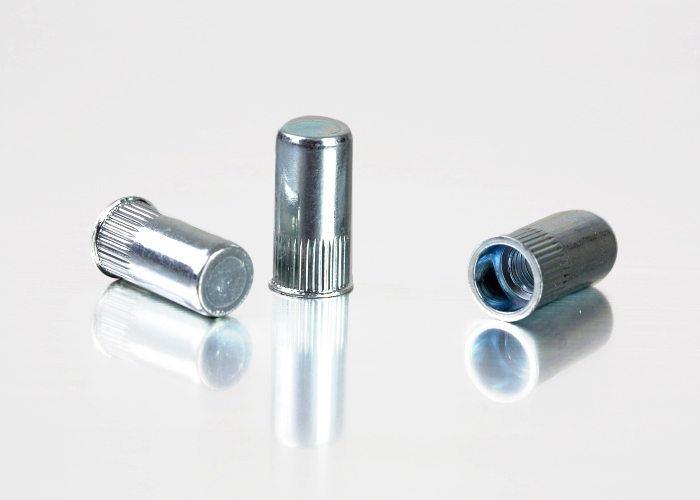The flat head rivet nut is a kind of fastening, and its functions and types are also many. The cylindrical part of flat head rivet nuts is divided into smooth type and vertical type, and vertical type rivet nut can play a non-slip effect due to its vertical type, which is a common processing method in production. The head leaks from the thin plate, and the flat head rivet nut is also the most commonly used and strongest rivet nut. Its national standard is GB/17880.1.
Fasteners such as flat head rivet nuts play a very important role in the installation of the host. Complex products such as airplanes, cars, trains, elevators, air conditioners, computers, etc. all have the problem of installing parts on relatively thin boards. There are two methods for the traditional installation process. One is to tap the internal thread on the thin plate. However, if the internal thread is tapped on a thin plate below 6mm, the installation will be unstable due to too few threads, and the thread will break even if force is applied. Cause the connection to fail; the second method is to use the process of welding nuts on the thin plate, which can easily lead to deformation of the thin plate and uneven welding surface. Sometimes, if the welding is not strong, the nut will fall off and damage the installation. The development of rivet nuts has solved the problem of installing parts on thin plates, because rivet nuts have both the characteristics of nuts and rivets, and their position in fastener products is becoming more and more important. With the continuous development of rivet nut production technology, various types of rivet nuts, such as torsion rivet nuts and non-slip rivet nuts, that meet various assembly requirements have appeared.
carbon steel rivet nut is the same, they are all products that make people use more convenient and comfortable.




